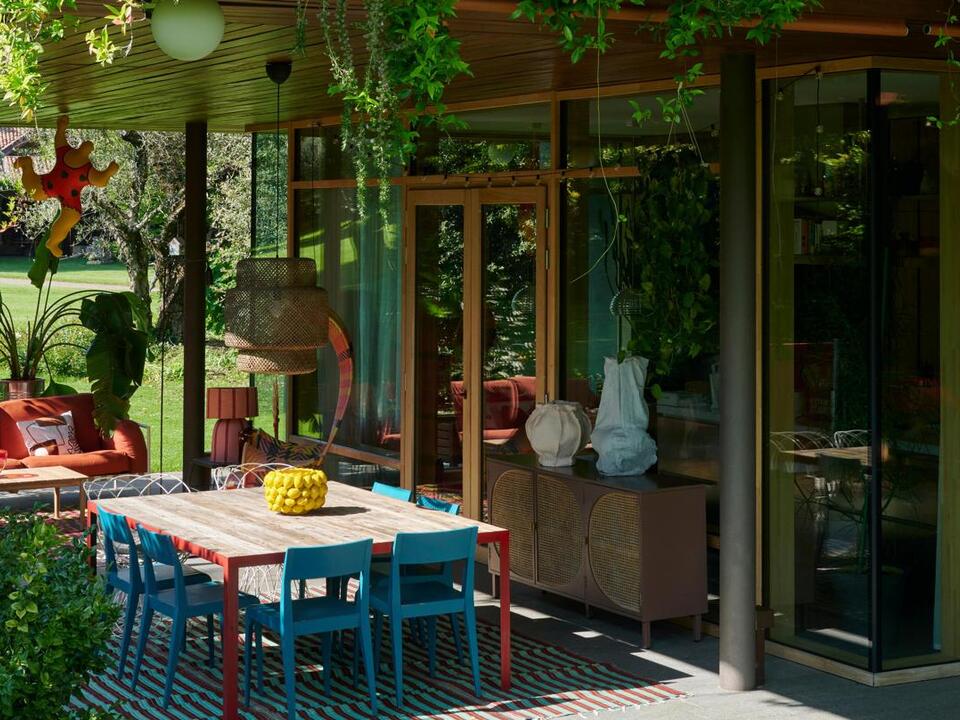Physical Address
304 North Cardinal St.
Dorchester Center, MA 02124
Physical Address
304 North Cardinal St.
Dorchester Center, MA 02124

When 43-year-old Italian architect Valentina Moretti returned to Italy from her time in Switzerland and the United States to assist her father, Vittorio, in his construction company, she embraced an opportunity to bring her vision for prefabricated homes to life.
“After many years working with famous architects, I understood that I really wanted to bring architecture into normal life,” Moretti explains. “So, when I returned, I started thinking about a new business model connecting an architecture office to a construction firm as one company, to build prefabricated houses and look after everything from start to finish.”
With Vittorio on board for the challenge, the project was plotted on the family’s hill in Franciacorta in Brescia, Lombardy. “My father bought this land in the 80s and started his winery business, and later built our hotel; now the whole family lives here,” she says.
Construction began in August 2018, and by December, the house was ready for the family to move in. “We built a 1,000 sq m home in just a few months because it’s prefab!” says Moretti. “In Italy, 13 December is Santa Lucia – which is similar to Father Christmas coming – so I really wanted my kids to be here for that night, and we were – all sitting around the tree.”
Constructed from concrete blocks within a steel structure and topped with a wooden roof, the house showcases the impeccable engineering skills Moretti honed at the Accademia di Architettura di Mendrisio in Switzerland, where she studied under Mario Botta, Peter Zumthor, and Valerio Olgiati.
“These were my masters and they taught me a functional way to approach a project, not in a decorative way but where the structure is the decoration,” she says.
Inside, Moretti and her husband, Francesco, arranged their belongings within the expansive open-plan living spaces and compact, box-like bedrooms. These rooms are connected by wall-to-wall windows, allowing the surrounding forest to become a fourth wall. “The idea for my home was to live in a forest,” she says, with her Zoom background revealing lush oak and nut trees. “During the construction, it was very important to my father to maintain [all the trees and vegetation] that were already here.”
Moretti has kept the interior design minimal, taking inspiration from Mies van der Rohe’s famous “less-is-more” philosophy.
In the kitchen, a large stainless steel island sits atop black tiles that extend throughout the ground floor, providing a cohesive look to the space. It’s here that the couple prepare hearty Italian meals and Moretti’s favorite Indian dishes with their sons Giovanni, Antonio, and Luigi. A table inherited from her parents serves as a transition into the living room. “I wouldn’t necessarily have chosen to have that here, but I love it because it has a lot of history,” she says.
The couple’s wedding gift list included only one item: the immensely comfortable sofas by Edra. “I really love those sofas. I put them in every project I do for my clients because they are the most comfortable you can find,” she says. Above one sofa hangs a mobile created by a Barcelona team authorized to reproduce Alexander Calder’s iconic original creations. Artwork by local Brescia artist Eugiene Carmi adds color to the exposed concrete walls.
Connecting the house’s three floors is Moretti’s masterpiece: a suspended steel staircase hinged off a 14m concrete slab. Typically used in construction to stabilize structures against seismic activity and hidden from view, it remains exposed here as a central feature.
Upstairs, the small bedrooms are furnished with branch-like beds designed by Moretti for the family’s hotel, L’Albereta, located down the hill. The children’s rooms boast hand-painted walls that look out onto the rooftop garden. “I wanted an explosion of flower confetti floating all around my kids,” she says.
The house is designed to be adaptable. “The building stays the same, but every six months I completely change the interior because I’m scared of getting bored,” she says.
“I put in a second entrance because I’ve already thought of long-term life here,” she says. “I designed this house to be easily separated into upstairs and downstairs so when we’re old we can live on one floor and rent out the other or maybe give the kids more privacy when they get older.”
For now, Moretti and her family are settled comfortably in their leafy haven, the first of 50 prefabricated homes completed by the father-daughter duo.
Clients often visit her kitchen table in Franciacorta. “In Italy, prefab is not very usual, and so often they come here and say, ‘Oh my God, I thought prefab was something you can move.’ No, I say, prefab is forever.”
Source: The Guardian



